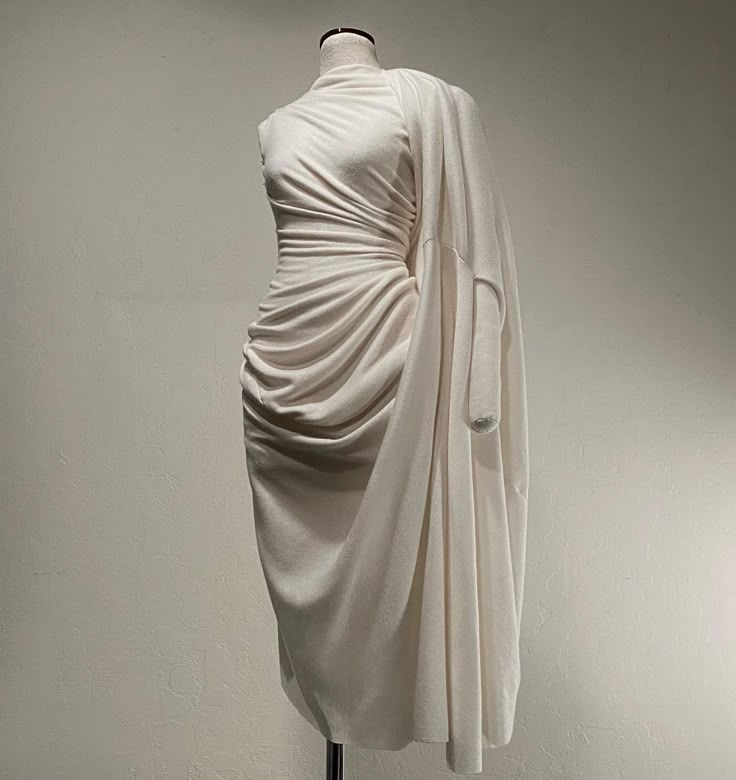The Power of Draping: Transform Your Designs with Simple Techniques
- Manpreet Kour
- Aug 6
- 3 min read
Updated: Aug 17

Think of a piece of fabric as a blank canvas. When you drape it over a mannequin, it begins to tell a story, fluid, organic, and full of potential. Draping isn’t just about placing cloth on a dress form. It’s about understanding how fabric flows, hugs, and transforms the body. And for fashion designers, especially beginners, it’s one of the most powerful tools to bring creative ideas to life.
If you're just starting out, don’t worry. You don’t need fancy tools or years of experience. With basic techniques and your imagination, you can create runway-worthy silhouettes from the comfort of your home.
What Is Draping in Fashion Design?
In simple terms, draping is the process of pinning, folding, and arranging fabric on a mannequin or dress form to create the structure of a garment. Unlike flat pattern making (where designs start on paper), draping brings a 3D perspective, letting designers visualize and manipulate how fabric will behave on a real body.
This technique has been used for centuries, from ancient Greek chitons to the high-fashion couture houses of Paris.
Why Draping Matters in Fashion
Whether you dream of becoming a fashion designer, stylist, or boutique owner, draping can give you a serious edge. Here’s why:
1. Visualizing Designs in Real Time
Sketches are flat. Draping is fluid. When you drape, you can immediately see how a neckline falls or how a pleat shapes the silhouette.
2. Creative Freedom
You’re not bound by measurements or strict lines. You’re free to experiment, twist, pleat, and flow the fabric into something truly original.
3. Better Fit & Structure
Designers who use draping often produce garments that feel more natural and flattering because the design evolves on the body form itself.
4. Expressive & Unique
No two drapes are ever the same. Even with the same fabric, each designer's hand creates a different mood or story.
Simple Draping Techniques You Can Try at Home
You don’t need a fashion school setup to begin. Here are beginner-friendly draping techniques you can try with minimal tools:
1. Basic Gathered Drape
Perfect for sleeves or skirts, gathered drapes add volume and texture.
Try this: Use lightweight cotton or muslin, pin one edge at the waist of a mannequin, and gather small pleats outward.
2. Cowls and Soft Folds
Ideal for necklines and backs, cowls bring softness and elegance.
Try this: Let the fabric fall naturally from the shoulder, and pin it slightly lower in front to allow the fabric to loop.
3. Pleated Draping
Sharp pleats can add structure to skirts, bodices, or even sleeves.
Try this: Pin one edge of the fabric, fold in even pleats, and secure them in place before shaping the rest of the fabric.
4. Asymmetrical Draping
Break symmetry to add an edgy, modern feel to your designs.
Try this: Drape more fabric on one side of the body or shoulder, letting it fall freely or cinching it with a belt.
Tools You Need to Start Draping
You don’t need expensive equipment. Just a few basics:
A mannequin or dress form (even a DIY one works!)
Muslin or light cotton fabric
Pins (lots of them!)
Measuring tape
Scissors
Chalk or marker
As you progress, you can invest in professional tools. But remember, creativity matters more than equipment.
How Skillinabox Teaches Draping (Without a Fancy Studio)
At Skillinabox, we believe fashion education should be practical, accessible, and empowering. In our 6-month Fashion Designing Course, you’ll:
Learn draping techniques using your own design kit
Work with a mentor to understand how fabric behaves
Practice on a dress form (provided in your kit!)
Use your draped looks to build a professional portfolio
Whether you’re in a metro or a small town, you’ll learn hands-on from home.
Explore the Fashion Design Course at Skillinabox
Conclusion: Draping is Where Your Design Journey Begins
Every great designer, from Sabyasachi to Dior, understands the language of draping. And now, you can learn it too. You don’t need a runway, a boutique, or even a degree. You just need fabric, curiosity, and a little guidance.
So take that first step. Pick up a cloth, start draping, and discover the designer within.



Comments